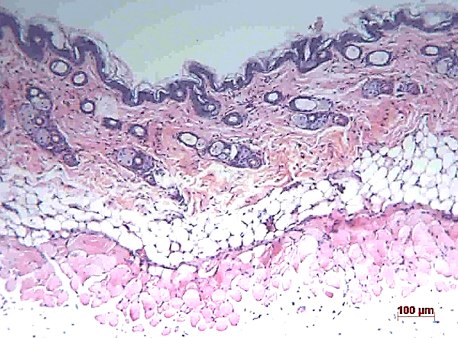Macerated Boesenbergia pandurata extract protects skin against UVB-induced aging: a preclinical randomized controlled trial
DOI:
https://doi.org/10.15419/bmrat.v10i4.806Keywords:
Mice, Animals, Skin Aging, Zingiberaceae, Inbred BALB/C, Biological Products, Skin Abnormalities, Connective Tissue, Protective AgentsAbstract
Introduction: The natural process of aging has an impact on people?s quality of life. The skin is among the body parts that age the fastest and is affected by both endogenous and external influences. Therefore, it is necessary to study the capacity of various natural extracts to protect against skin aging. This study aimed to evaluate the protective effects of Boesenbergia pandurata extract (BPE) against UVB-induced skin aging in a murine model.
Methods: The maceration process was used to isolate BPE, and its stability was assessed using liquid chromatography-mass spectrometry (LC-MS). Balb/C mice were treated with various doses of BPE (50 mg/kg, 100 mg/kg, and 150 mg/kg) after being exposed to UVB at a rate of 300 mJ/cm2 to establish a skin photoaging model. The skin?s appearance and tissue and cell morphology were evaluated using hematoxylin and eosin (H&E) staining and Masson?s trichrome staining, respectively.
Results: The results showed that the treatment groups did not exhibit any major signs of aging, such as wrinkles, dryness, or roughness, whereas the UVB-exposed group did. Due to the cleavage of collagen fibers, Masson?s trichrome staining revealed a lack of connective tissue in the UVB-only group; additionally, H&E staining revealed abnormalities in the cellular structure of the tissue. On the other hand, the treatment groups? outcomes were consistent and comparable to those of the control group according to the H&E and Masson?s trichrome staining results.
Conclusion: Overall, our findings show that BPE, especially at a dose of 50 mg/kg, can successfully protect skin from UVB-induced aging, providing a potential strategy for the development of natural anti-aging products.

Downloads
Published
Issue
Section
License
Copyright The Author(s) 2017. This article is published with open access by BioMedPress. This article is distributed under the terms of the Creative Commons Attribution License (CC-BY 4.0) which permits any use, distribution, and reproduction in any medium, provided the original author(s) and the source are credited.
